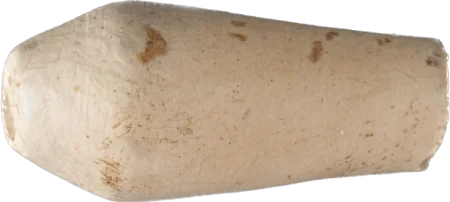Excavated from the South Grove, these five objects offer an interesting chance to explore 18th-century life and how archaeologists attempt to learn more about it through material evidence.
by Sean Devlin, Curator of Archaeological Collections
Measuring roughly two inches in length when complete, these artifacts are fragments of wig curlers. The curlers are made from white clay that was rolled to a shape resembling a dumbbell, then cut at the ends to the appropriate length. Each of our fragments represents roughly half of the complete object, which broke at the narrowest portion of the curler near the middle of its length. Once cut to length, the clay curlers were hardened through firing in a kiln.





